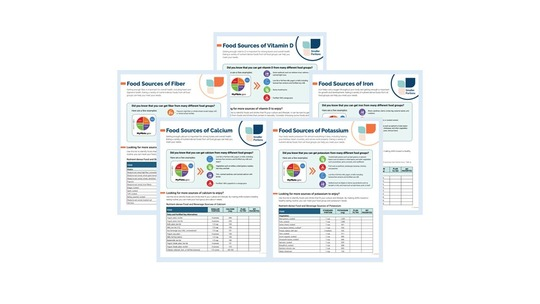Getting key nutrients just got a little easier with a set of new tools that help consumers and nutrition professionals identify sources of key nutrients in foods and beverages. About half of all adults in the United States— or 117 million individuals — have 1 or more preventable chronic disease, many of which are related to poor-quality eating patterns and physical inactivity. These include cardiovascular disease, high blood pressure, type 2 diabetes, some cancers, and poor bone health.1
The Dietary Guidelines for Americans, 2020-2025 identified calcium, potassium, dietary fiber, and vitamin D as nutrients of public health concern because many of us do not get adequate amounts of these nutrients in our diets. Iron is also a critical nutrient for pregnant people and some infants. To help consumers and nutrition professionals identify which foods contain these much-needed nutrients, USDA and HHS have developed these new tools that explain where to find calcium, dietary fiber, potassium, vitamin D, and iron in a variety of foods and beverages that meet a range of dietary preferences and cultural traditions.
Included with these tools is a customizable Excel spreadsheet that allows users to develop custom lists of foods and beverages that contain sources of key nutrients. Developed to help users make healthy food choices, the spreadsheet allows users to tailor the lists of foods in a way that supports cultural diversity in food preferences among people living in the U.S. We hope you share these tools with your clients—and use them to help meet your own dietary needs.
For additional resources from the Dietary Guidelines for Americans, 2020-2025 that you can use and share with others, visit the Professional Resources and Consumer Resources sections of DietaryGuidelines.gov.




